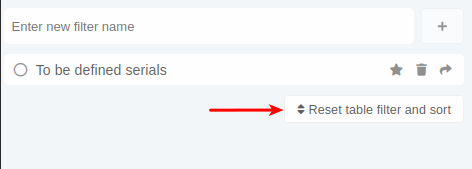Filters
The filters section, above a table, allows user's to apply custom filtering to the table.

Filters for every field can be accessed by pressing the ![]() icon next to the field's name.
icon next to the field's name.
Fields
without Test
 test
test
icon cannot be filtered by.
Types of available filters
There are several types of filters available in the filter section.
Most common among these are:
-
Yes/No filter (filter'Filter's value is either true or false)
false.Date filter (field'Field's value is a date range between date 1 and date 2)2.Text filter (fieldField value is equal to given value)value.Select filter (selectSelect a value from a drop-downprovidedlist)list.
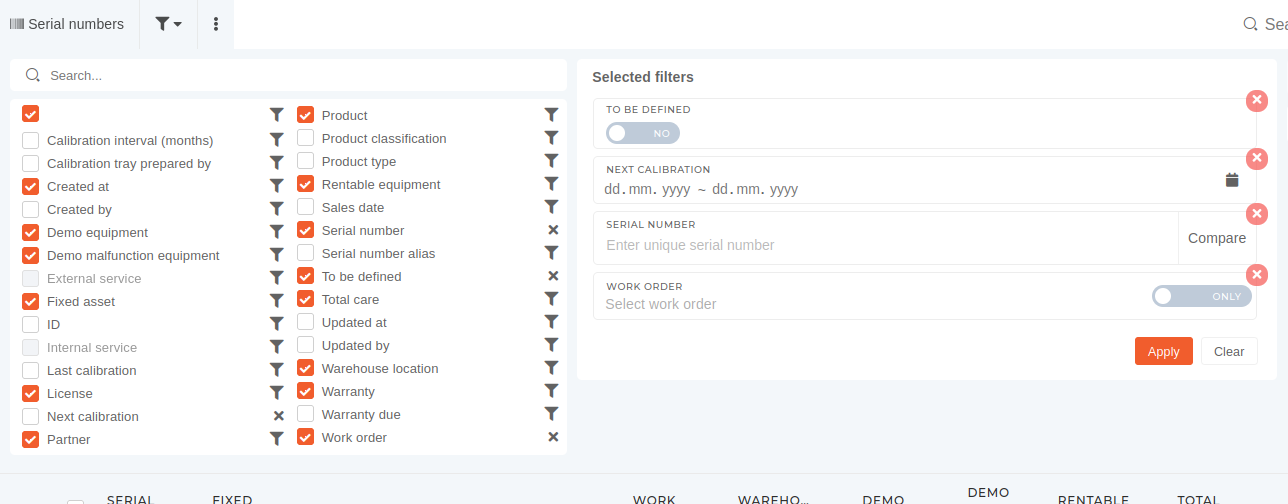
To apply the filters, press the "Apply" button, which reloads your page and filters table rows. You can remove all applied filters at once by pressing the "Clear filters" button, or one at a time by pressing the "x" in the top right corner of the filter fields.
NOTE: The table configurationfilters, that you set,set for yourself, will only be set on the computer you set itthem on, if you don't save it.
Saving set filters
When you create a customized table view, you can choose to save your current configuration (the filters you have set and the fieldscolumns you have set as visible).
To save an existing configuration, just give it a name and press the "save+" button, and the configuration will be saved, toavailable befor useduse anywhere you log in. To apply an existing saved filter, just pressclick the arrow next toon it's name.
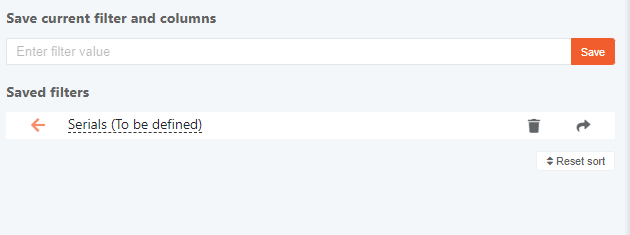

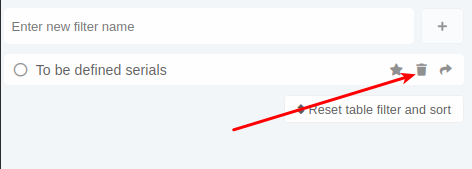
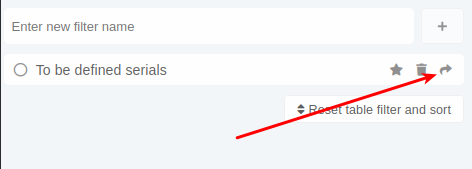

If you want to delete a previously saved filter, you can do that by clicking the trash bin icon on the right side, at which point you will be prompted to confirm its deletion.
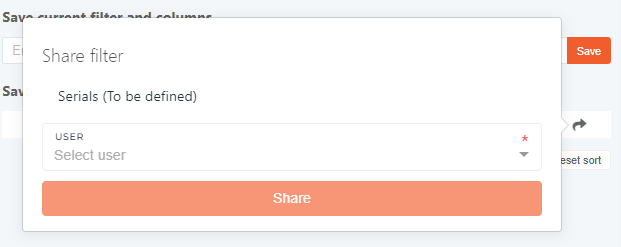
UnderThere is a "Reset table filters and sort" button under the list of saved filtersfilter lies the Reset sort button.sets. By pressing this button, you remove theall filters and any column sorting, done viaby clicking column headers in the tables.
